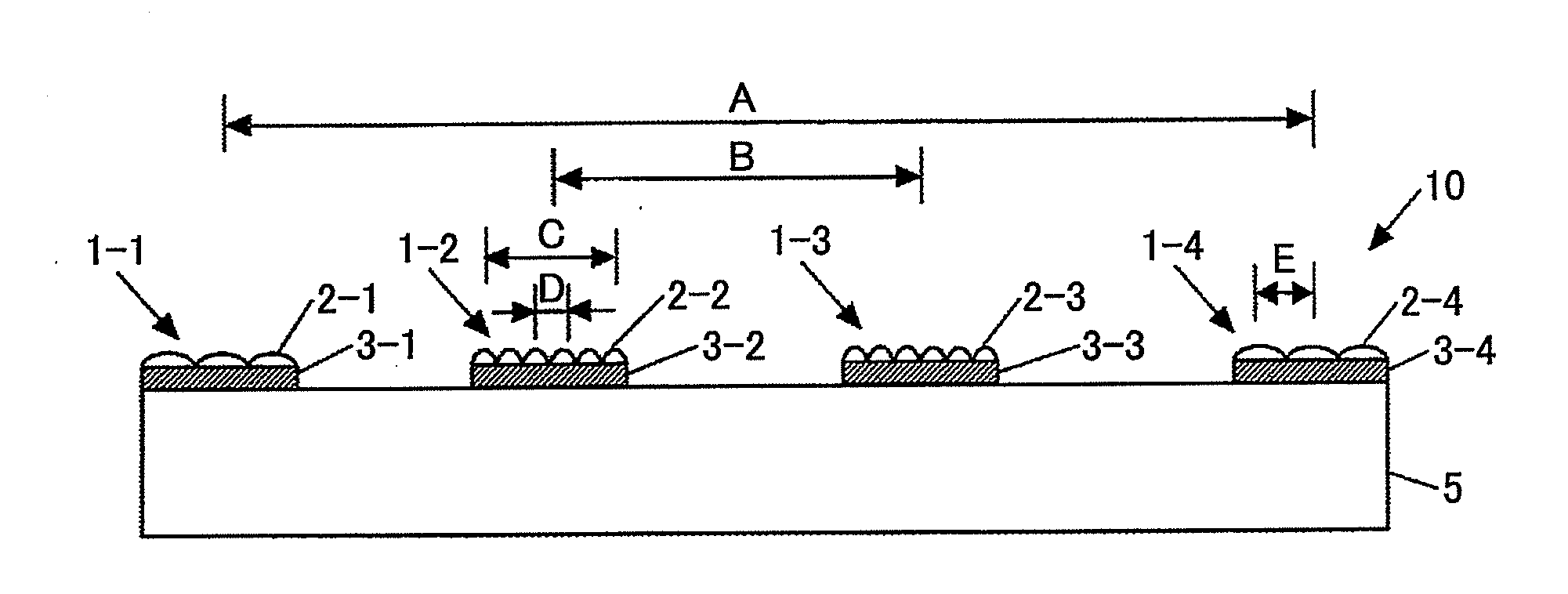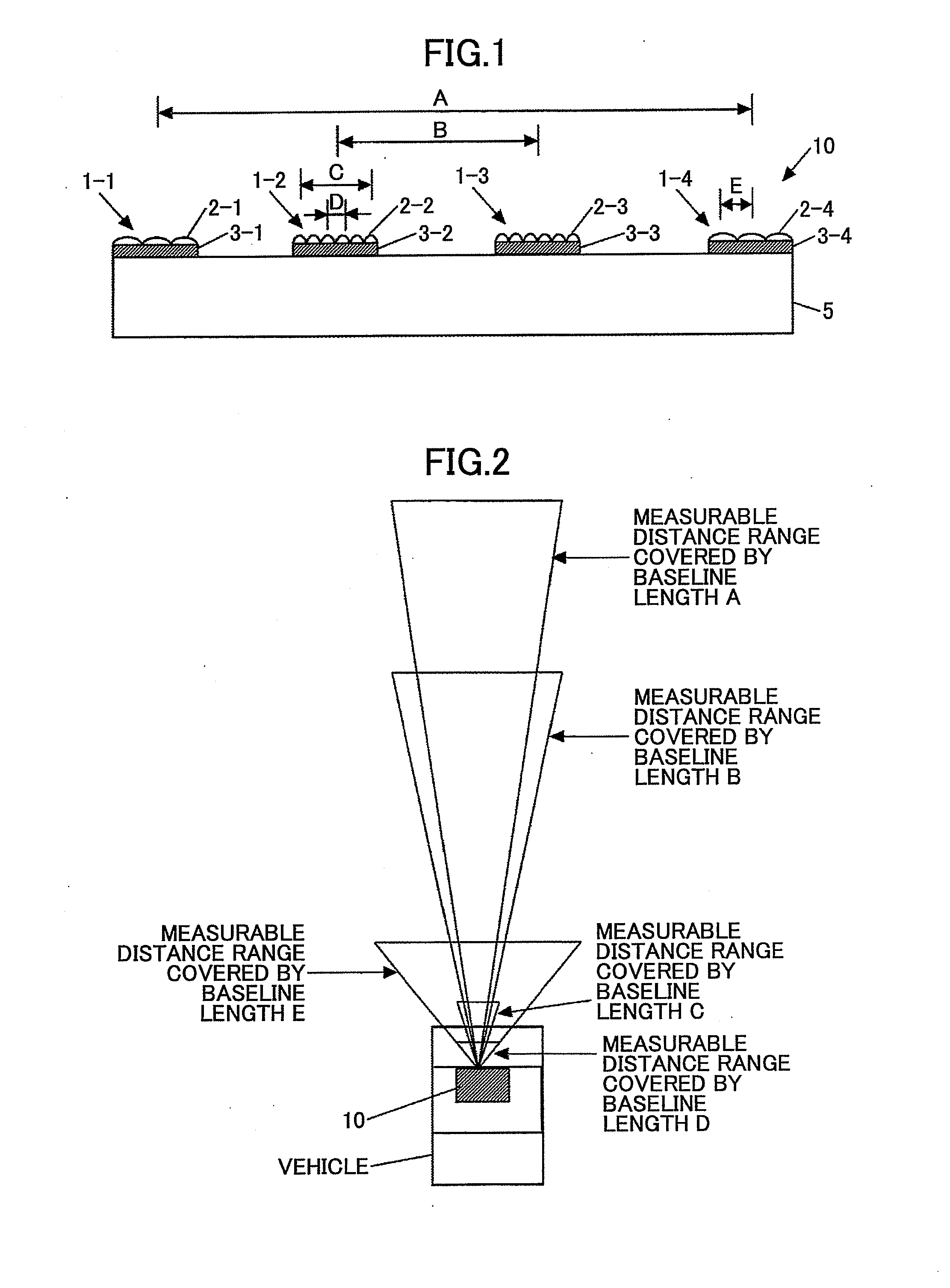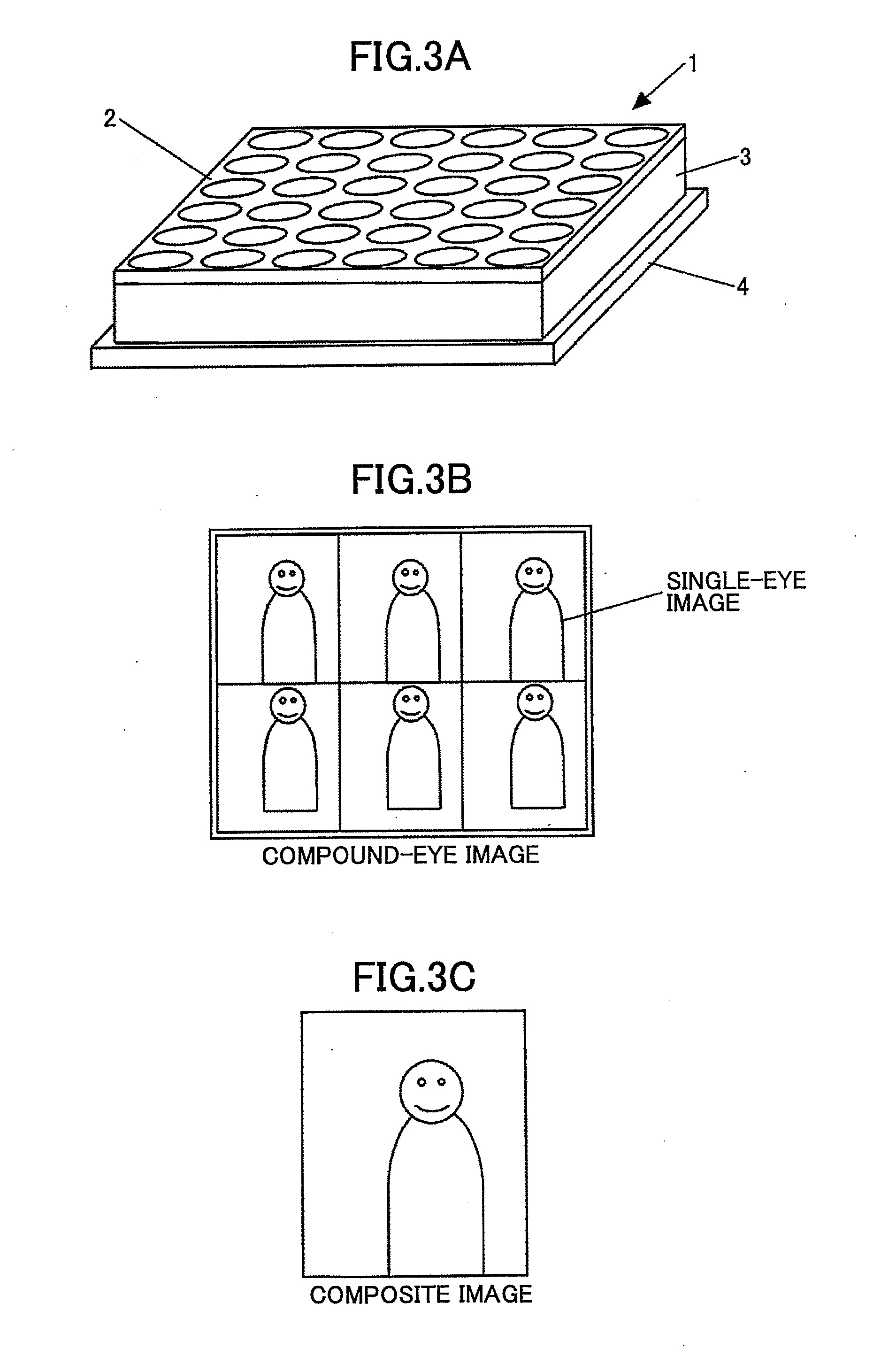Image pickup apparatus and rangefinder
a technology of image pickup and rangefinder, which is applied in the field of image pickup apparatus and rangefinder, can solve the problems of large measurement error, difficult long searching time to determine the corresponding viewing position to the target, etc., and achieves low cost, high accuracy, and efficient measurement
- Summary
- Abstract
- Description
- Claims
- Application Information
AI Technical Summary
Benefits of technology
Problems solved by technology
Method used
Image
Examples
embodiments
[0038]The features of the embodiments are described below, with reference to the accompanying drawings.
[0039]FIG. 3A is a diagram illustrating a configuration of a compound-eye camera including a lens array. As illustrated in FIG. 3A, a compound-eye camera 1 is configured to include a lens array 2 having plural lenses arranged in a plane, a sensor 3, and a substrate (printed circuit board) 4. The sensor 3 is configured to include an optical filter having plural regions in a lattice-like arrangement and an image pickup element such as a CCD or a CMOS. The plural images obtained via the plural lenses of the sensor 3 in FIG. 3A are integrated to form an image on the image pickup element. The number of lenses in the lens array 2 illustrated in FIG. 3A is only an example and may be including two or more lenses.
[0040]FIG. 3B illustrates an example of images obtained by the sensor 3 in a case where the number of lenses in the lens array 2 of the compound-eye camera 1 is 6. In FIG. 3B, plur...
first embodiment
[0041]FIG. 1 is a diagram illustrating an image pickup apparatus (a compound-eye stereo camera) according to a first embodiment that utilizes plural compound-eye cameras having the configuration illustrated in FIG. 3A. The image pickup apparatus according to a first embodiment includes a set of two compound-eye cameras 1-1 and 1-4 having the same lens shape, and a set of two compound-eye cameras 1-2, and 1-3 having lens shapes differing from the lens shape of the compound-eye cameras 1-1 and 1-4. The two sets of the compound-eye cameras are arranged in a case (i.e., a camera unit) to form the image pickup apparatus (compound stereo eye camera). The compound-eye cameras 1-1, 1-2, 1-3, and 1-4 include respective lens arrays 2-1, 2-2, 2-3 and 2-4, and respective sensors 3-1, 3-2, 3-3 and 3-4 (substrate is not shown) in a manner similar to the compound-eye camera 1 illustrated in FIG. 3A.
[0042]Note that with only one compound-eye camera 1 illustrated in FIG. 3A, it is difficult to set t...
second embodiment
[0052]FIG. 5 is a diagram illustrating an example of an image pickup apparatus 11 according to a second embodiment that utilizes the compound-eye camera illustrated in FIG. 3A and two noncompound-eye cameras 6-1 and 6-2. In this case, since the cameras 6-1 and 6-2 having noncompound-eye lenses 7-1 and 7-2 do not use the composite image, the images captured by the sensors 8-1 and 8-2 have higher resolution. Thus, the number of sensors may be reduced compared to the number of sensors used in the image pickup apparatus 10 according to the first embodiment in FIG. 1. Compared to the configuration of FIG. 1, the configuration illustrated in FIG. 5 is capable of implementing accuracy in a longer distance measurement, and the accuracy in the ultra-short (near) distance measurement equal to or more than that obtained by the configuration of FIG. 1. However, the configuration illustrated in FIG. 5 may lower accuracy in an intermediate distance measurement covered by the baseline lengths B an...
PUM
 Login to View More
Login to View More Abstract
Description
Claims
Application Information
 Login to View More
Login to View More - R&D
- Intellectual Property
- Life Sciences
- Materials
- Tech Scout
- Unparalleled Data Quality
- Higher Quality Content
- 60% Fewer Hallucinations
Browse by: Latest US Patents, China's latest patents, Technical Efficacy Thesaurus, Application Domain, Technology Topic, Popular Technical Reports.
© 2025 PatSnap. All rights reserved.Legal|Privacy policy|Modern Slavery Act Transparency Statement|Sitemap|About US| Contact US: help@patsnap.com



